SkanCraft's innovative pile-driving attachment, which can be rotated and tilted hydraulically, significantly simplifies workflows on the construction site. It replaces conventional, often cumbersome methods with chain guides and ensures greater safety, speed and precision when installing beams – for example, in Berlin shoring.
The key difference to conventional piling rigs is the ability to pick up the pile directly from the ground - without external support or manual adjustment. While chains have often been used in the past to position the beams, the new solution from SkanCraft uses a hydraulically controlled clamp to grip the material automatically and reliably. The chain only serves as an additional safeguard against operating errors.
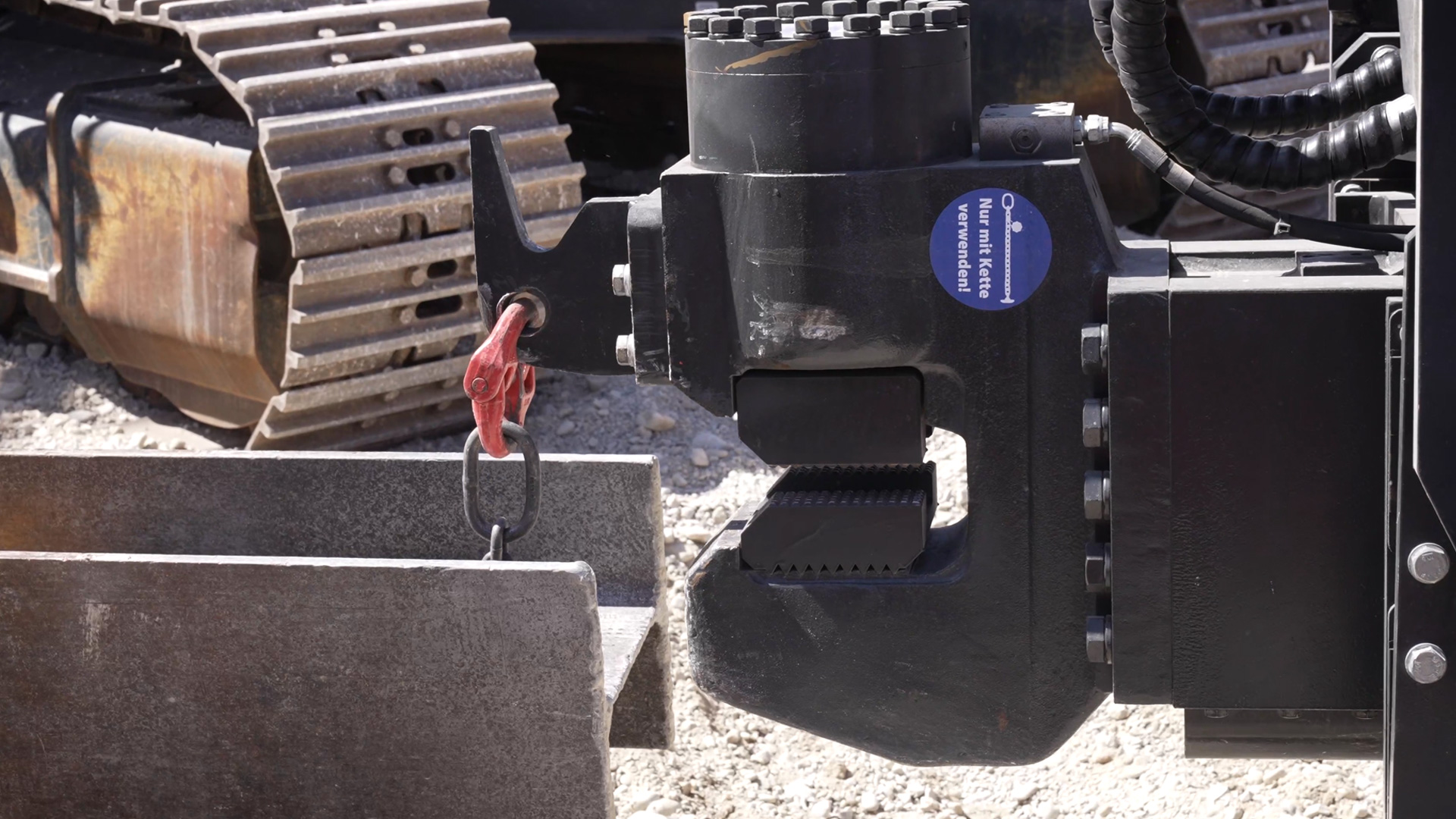
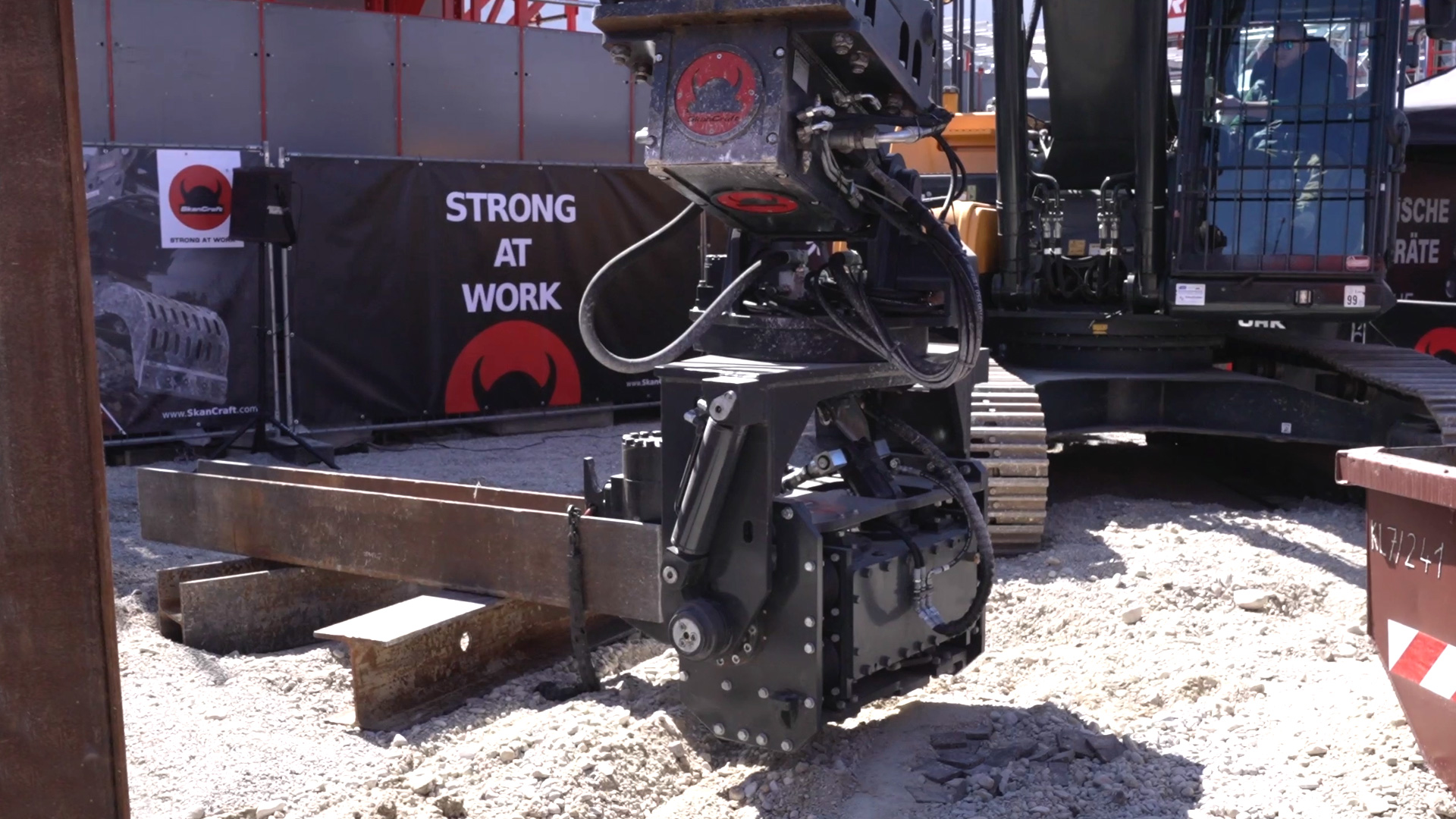
This means a noticeable relief for the construction site personnel: where heavy physical labor was previously necessary – for example, when aligning elements several meters long against the wind and without stable fixation – the excavator now does the main work. The risk of accidents or slipping material is significantly reduced. At the same time, the set-up time is reduced by about 30 percent, according to the manufacturer. The material flow is faster, personnel can be deployed more efficiently, and unnecessary waiting times are eliminated.
Another key feature of this development is the hydraulic adjustment of the angle, which previously had to be carried out manually by the pile driver. This involves aligning the beams with millimeter precision, as timbers are later clamped between them, the accuracy of which depends on the alignment of the beams. The more precise the alignment, the less time is required to fit the timbers - an important advantage for the subsequent trades.
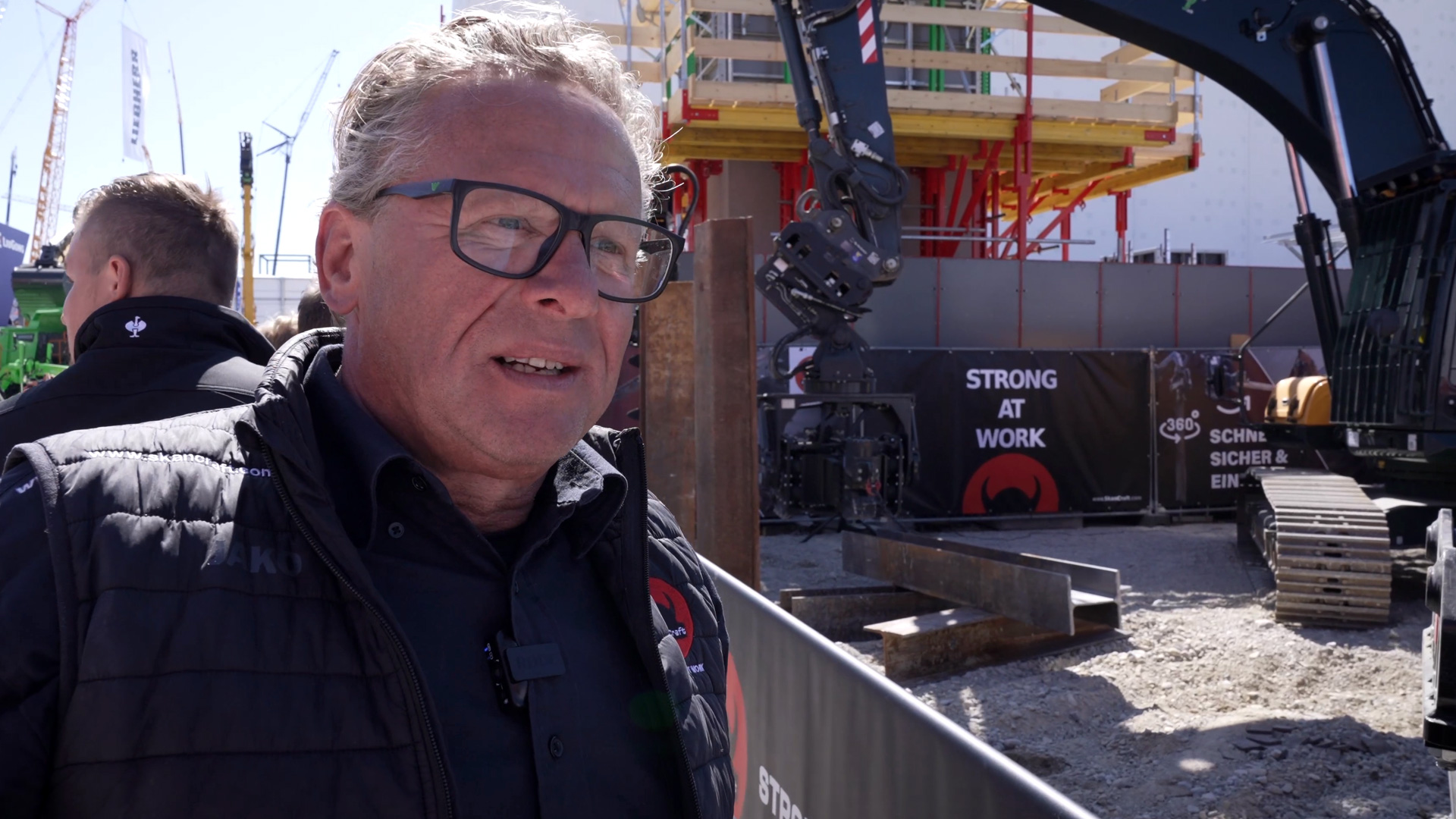
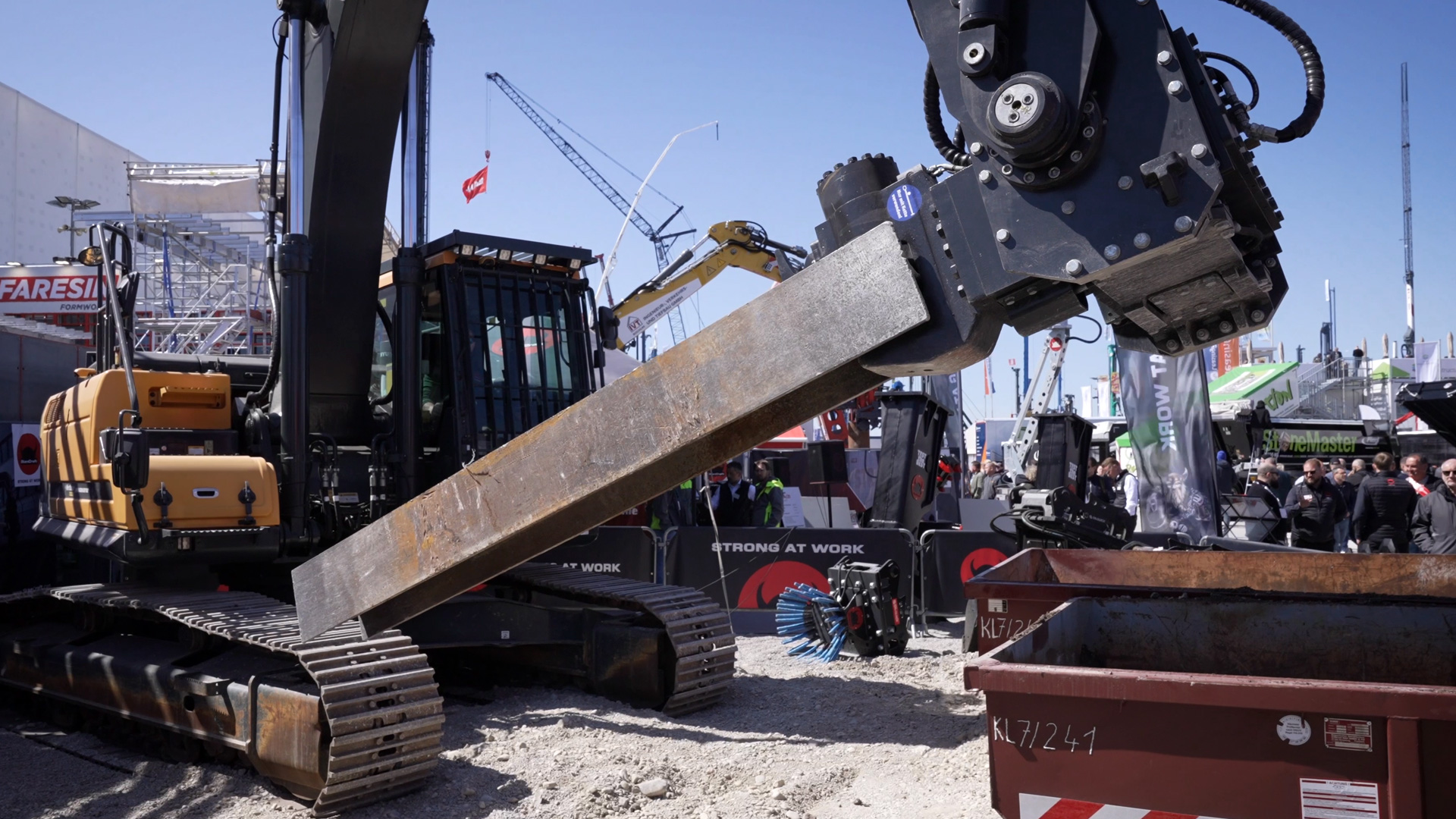
Instead of laboriously adjusting by hand using ropes and chains, the pile driver now only provides directional information using a spirit level, while the excavator operator uses the joysticks for precise tracking. This takes a considerable amount of work off the pile driver's hands, as he can concentrate on monitoring. The advantage is particularly evident in unfavorable weather conditions, in windy conditions or with long, heavy beams, which previously could hardly be aligned in a controlled manner.
A particularly practical feature is that the SkanCraft piling attachment can be used on any excavator that has hammer piping with a rotating unit and a 24-volt socket - i.e. on most machines used in everyday construction work. No changes need to be made to the controls. The excavator operator continues to work with the familiar joysticks, so no lengthy training or familiarization is required. The system is immediately ready for use and provides the necessary flexibility on changing construction sites. This technical openness increases suitability for everyday use and lowers the entry barrier for companies that do not want to completely convert their machine fleet, but rather expand it in a targeted manner.
Although pile driving remains a niche application compared to other construction methods, it is becoming increasingly important - particularly in urban civil engineering and temporary shoring systems. The presented attachment is priced at less than 100,000 euros, which is an attractive offer in view of the efficiency gains and the low level of competition on the market.
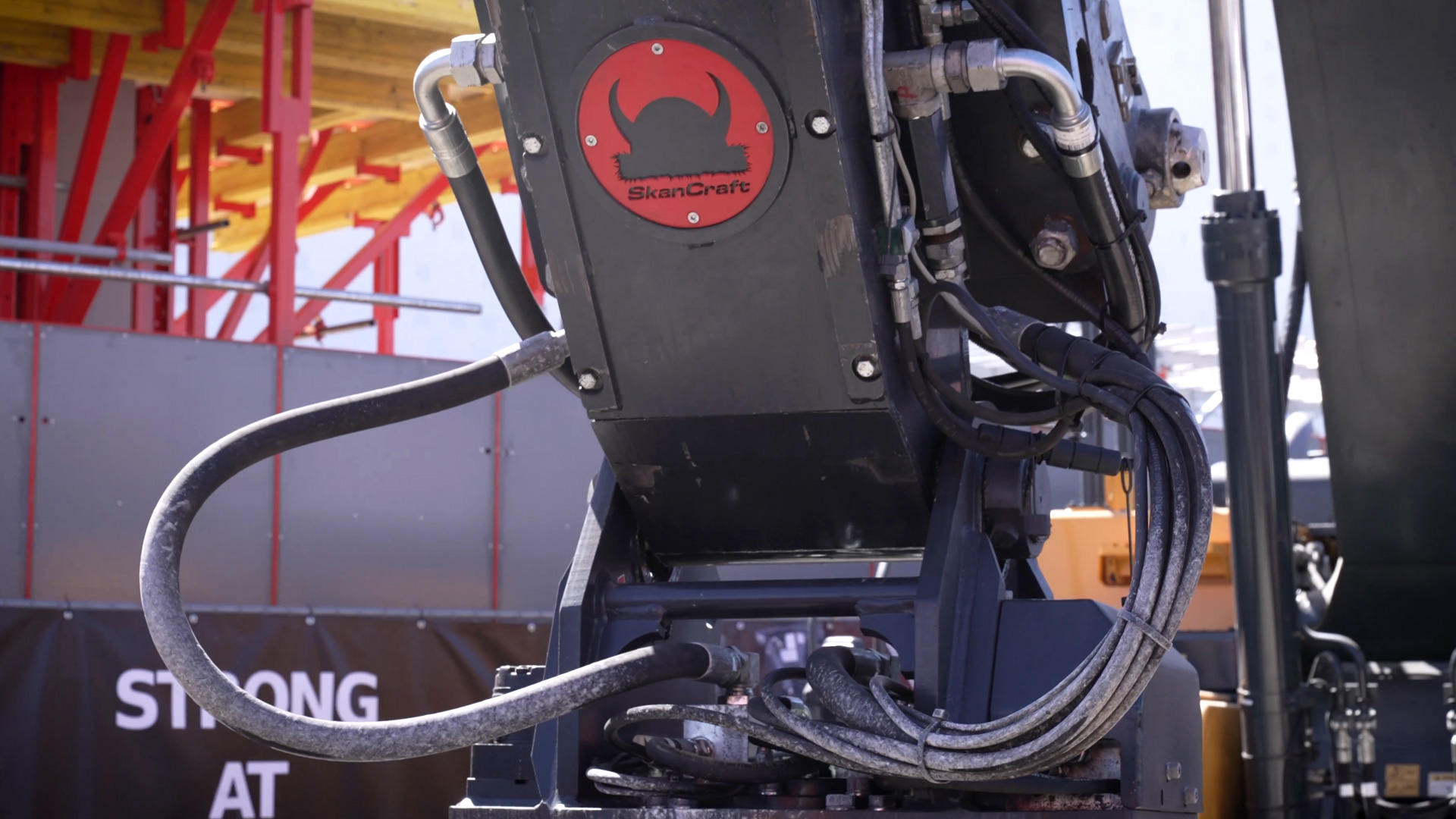
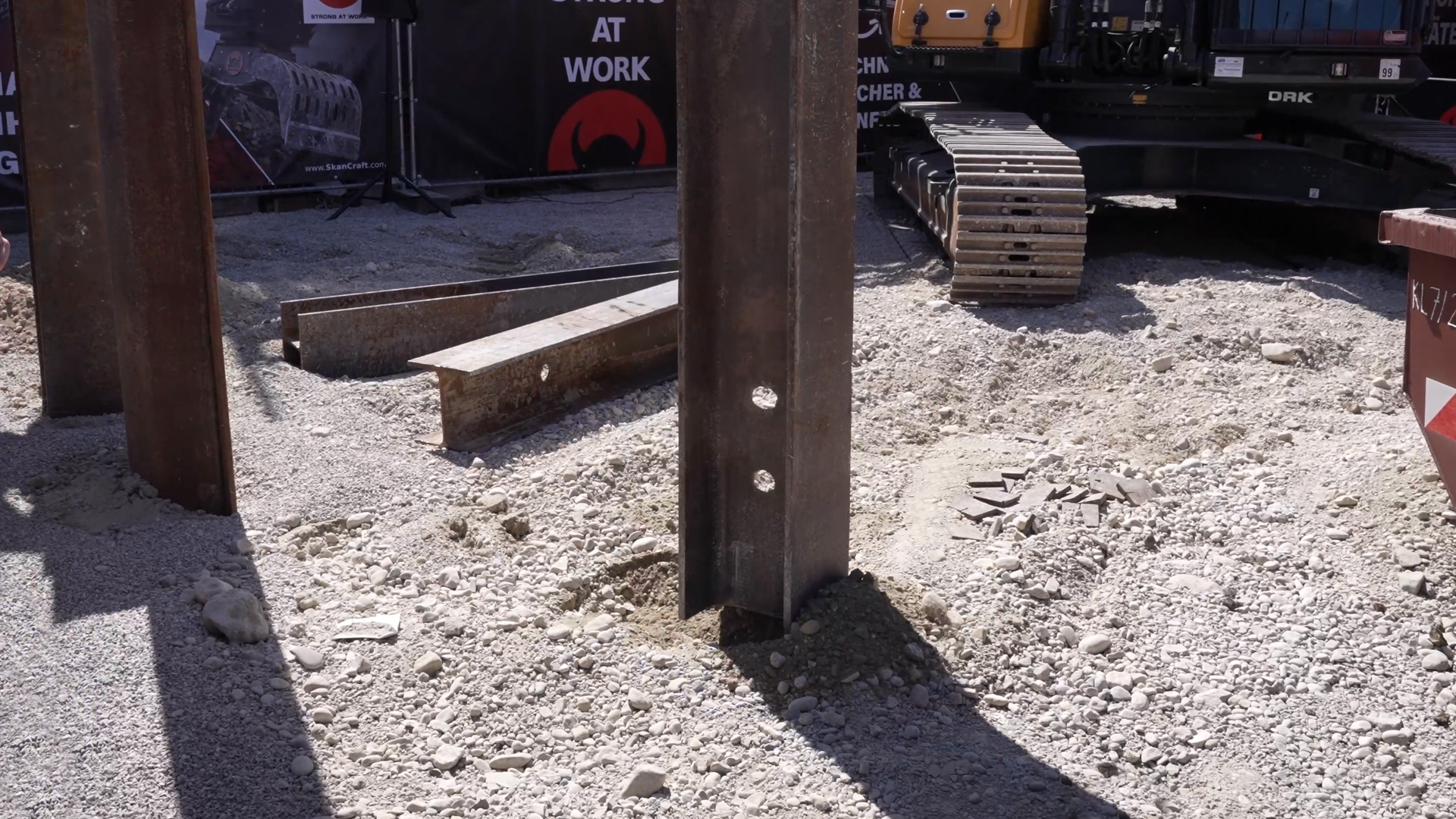
The combination of technical maturity, intuitive operation and retrofittability opens up opportunities for companies to position themselves in a growing market. Those who invest early not only secure a head start in project implementation, but also advantages in the competition for personnel: less physical strain, more automation and a safer work process significantly increase the attractiveness of construction sites.
This solution technically upgrades an activity that is often still carried out conventionally. The hydraulically rotating and tilting ram from SkanCraft relieves personnel of dangerous and stressful manual operations, speeds up the process and at the same time increases the precision of the work. The combination of intelligent mechanics, flexible integration and simple control makes the system a future-proof addition for specialist civil engineering - especially where time pressure and safety requirements come together.